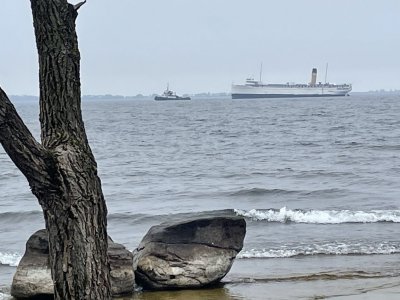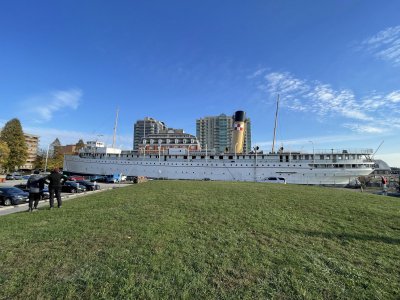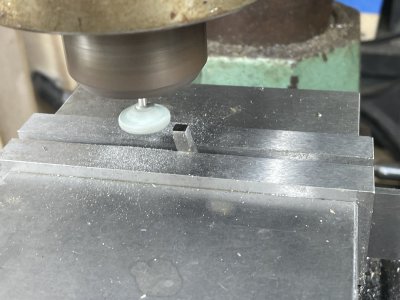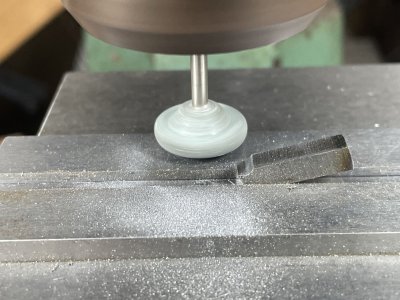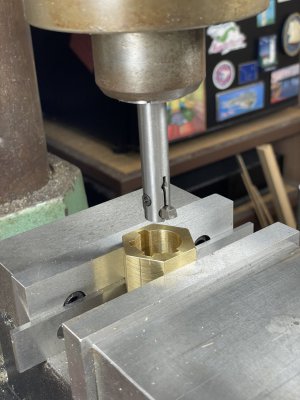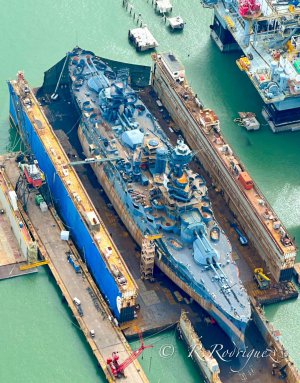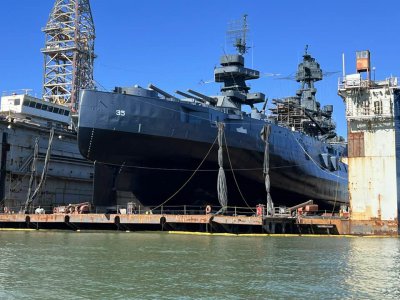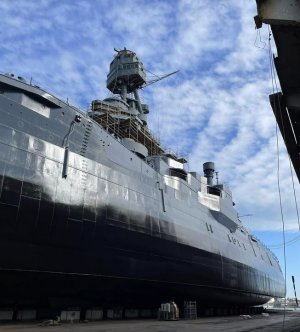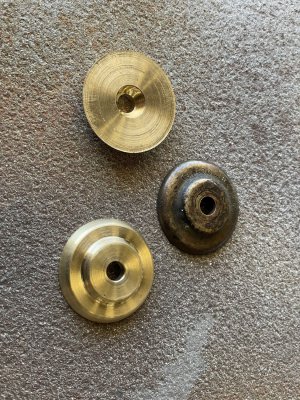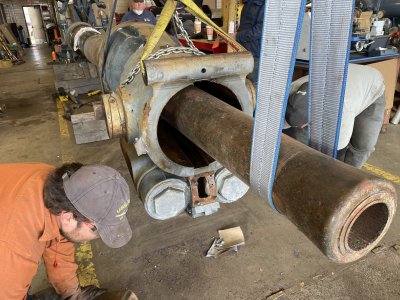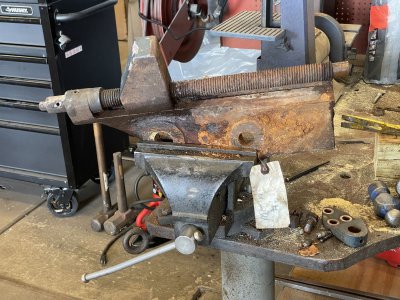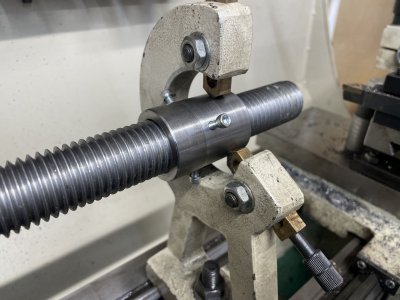We’ve had a big push to get the 5” guns ready to go back onto the ship. I’ll post pictures first chance. They’ve kept me busy with small jobs. I’ve ended up cutting keyways in 4 of the bronze gears and just brought more of the same home.
Sometimes my alligator mouth gets the better of my parakeet back side. I had another of those moments a couple of weeks ago. One of the staff had a shaft that was part of the training gear (rotation) of a 5” mount that was badly pitted under its bronze bushing. I had never shrink fit parts before but told them, “Sure, I can fix that.” After all, I knew what was required and felt lil it was within my skill level. I got them to order 6” of 1-3/8” annealed 4140.
The little end of the shaft was 1” OD. I really appreciate that engineers in 1910 were inclined to use common dimensions. Most of what I’ve worked on for the battleship has been common Imperial standard sized on 1/4” and occasionally 1/8” increments. That said, the shaft is a few inches longer than the centers distance of my lathe. So grateful that I got a set of ER40 collets and a chuck recently. The outboard end of the shaft for about 8” had a big keyway so I put the stead rest inboard of that area. Fortunately, the other place where the shaft rides in a bronze bushing was undamaged and appeared to be its original diameter. I put indicators on the top and near side of the shaft and was pleased to get it aligned within a couple of tenths over 8”-10”. The speeds and feeds calculator called for at least 1200 rpm. The metal cut beautifully but showered me with really hot chips. It took about 0.100” to remove all of the pitting. The final OD was 1.043”.
I cut off 2-3/4” of the 4140 and started boring with drills and then boring bars until it hit 1.042”. A test fit confirmed an interference fit. A propane torch was enough to get the 4140 blue hot. The sleeve dropped onto the shaft like I knew what I was doing with a nice clink. It was given a little time to cool and then turned down to match the diameter of the undamaged area. The final .0005” was taken off with a big file and emery cloth. After that I machined about 0.1” of excess off of the end, set it up in the mill and recut the keyway slots into the sleeve. Leaving the turned down area a little over 1.000” made it easy to get the correct length and eliminated the need to touch the original 1” area with cutting tools.
Upon test fitting it passed through the first bushing but was tight in the second, where it runs. After a quick pass in the bore with a hone it fit slop free.


